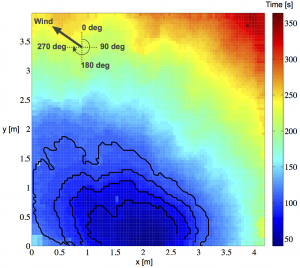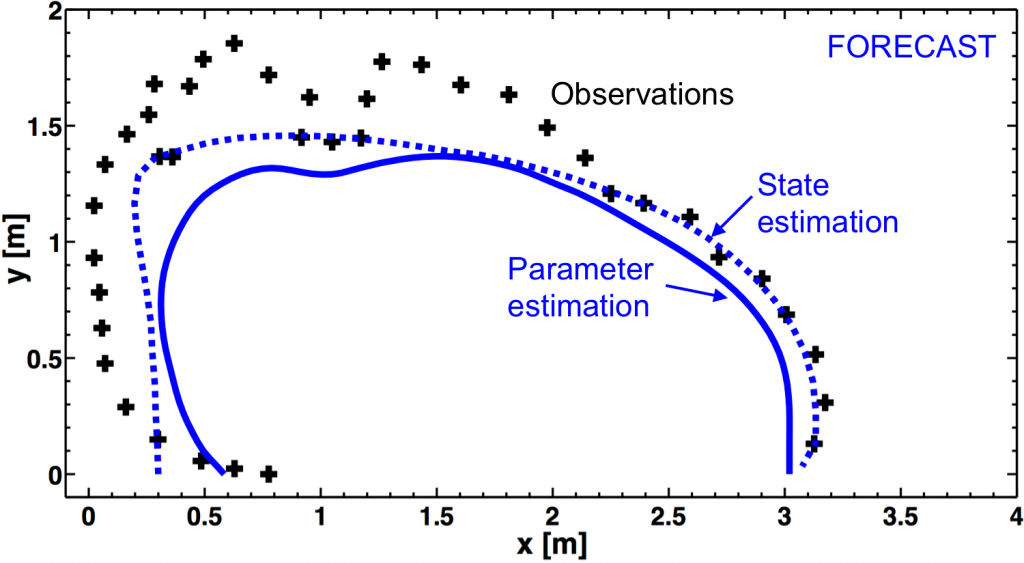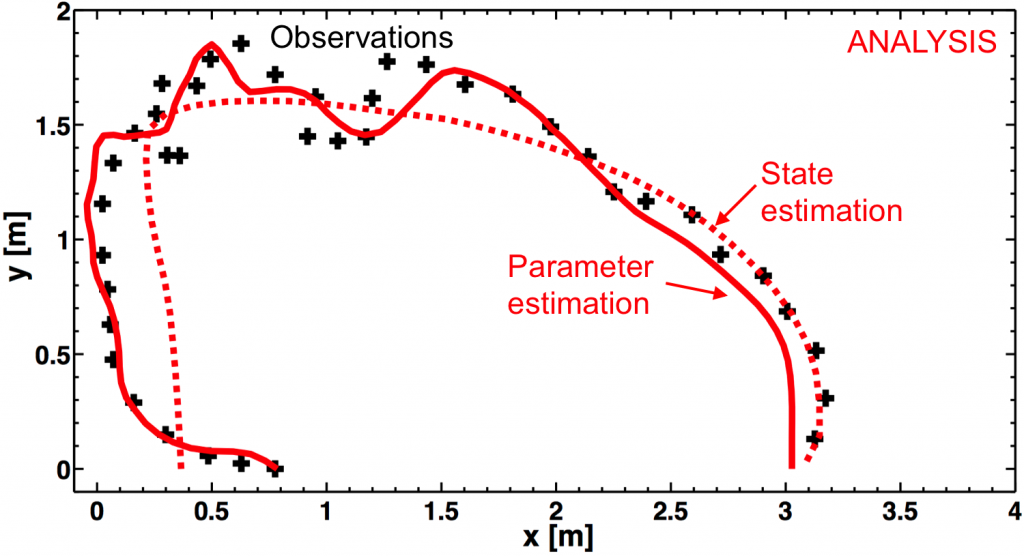
Data from KCL (Martin Wooster, Ronan Paugam)
The fire corresponds to a reduced-scale (4 m x 4 m), flat, open-field grassland lot burning in which the rate of spread takes values on the order of 1 cm/s under moderate wind conditions (around 1 m/s); the fire was observed using mid-infrared imaging camera located at 10 m above the field. This example provides a comparison between the parameter estimation approach and the state estimation approach for which grass properties (e.g. fuel moisture content) and mean wind conditions are assumed uniform and uncertain. The average of the EnKF ensemble at time 106 s is shown in the figure.
The mean analysis successfully reduces the distance between model predictions and observations. The state estimation approach allows to track the anisotropic propagation of the fire at the observation time and to restart the fire spread model at a more accurate initial condition. While less accurate than the state estimation approach at the observation time (average correction along the fireline), the parameter estimation approach improves the knowledge on the model input parameters and increases the accuracy of the forecast beyond the observation time.
While a data assimilation approach provides excellent forecasting performance at short lead times, the assimilation frequency (i.e., frequency at which the analysis is renewed by observations) needs to be adjusted to the persistence of the initial condition and/or to the temporal variability of the errors in the environmental conditions.

Forecast (with an EnKF update at time 92 s)

Analysis (with an EnKF update at time 106 s)
→ Rochoux et al. (2014, NHESS), part 1 on parameter estimation approaches (EnKF vs. reduced-cost EnKF)
→ Rochoux et al. (2015, NHESS), part 2 on comparison between parameter and state estimation approach

